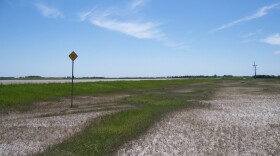If you feed the birds during the winter, you may notice some differences in the species visiting the feeders from year to year. Some species, such as chickadees, are consistent visitors. But other species, such as siskins, seem to vary considerably — and during some years they seem to show up en masse, indicating some sort of invasion or "irruption" — meaning a sudden change in the population density.
Many of these irruptive species are finches that winter in the northern coniferous forests of Canada. Food shortages can lead them to move southward in search of food. Those food shortages are often the cause of these irruptions. Actually, there may be two irruptions: one in the late fall or early winter due to a poor fruit or seed crop, and again toward the end of the winter if their food sources become scarce.
The Winter Finch Forecast started several years ago by ornithologist Ron Pittaway. With the assistance from friends and colleagues, he assessed the food crops of various species of finches across Canada, and used that information to predict the finches’ movements for the upcoming winter. The forecast is now headed by Tyler Hoar and the Finch Research Network.
Because we are so close to the Canadian border here in North Dakota, many of these finches are occasional visitors to our bird feeders — such as purple finches, redpolls, and pine siskins.
West of Lake Superior, the berry crops and conifer seed crops were generally poor this summer. However, there were good crops in some pockets, so we may not get a lot of movement this year.
As for the individual forecasts:
- Red-breasted nuthatch populations have been irrupting. We should be able to see a few of them this winter.
- White-winged crossbills will probably stay up north due to a bumper crop of white spruce seeds. However, red-wing crossbills have been observed in McHenry County.
- A few purple finches have been observed in the state, but most will probably stay up north.
- The birch seed crop in western Canada was average this summer, so many of the common and hoary redpolls will probably stay up north. But a few have been observed in Billings County.
- Most pine siskins will stay up north, but a few should see a few of them.
- The mountain ash fruit crops were above average west of Lake Superior this summer, so we may not see many of pine grosbeaks.
- This could be a good year to see evening grosbeaks. Their populations are increasing, and they are reportedly on the move.





